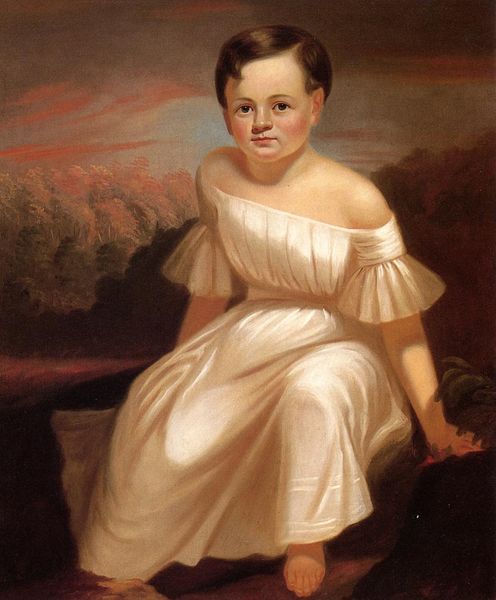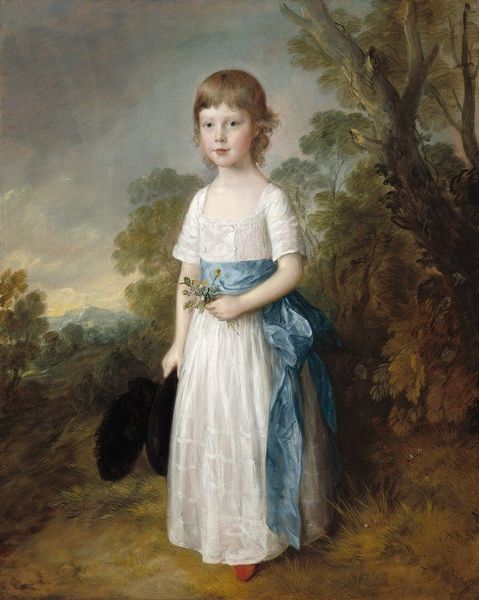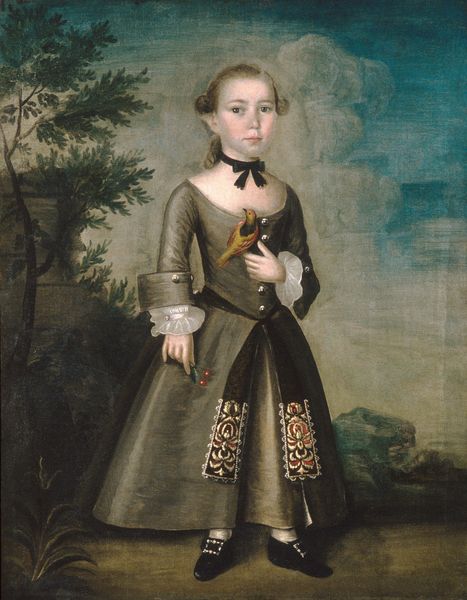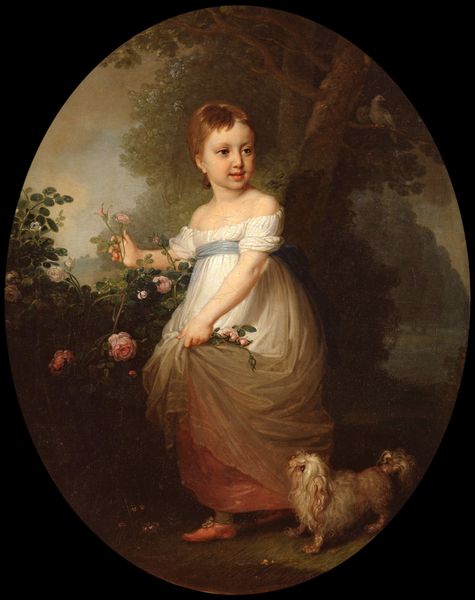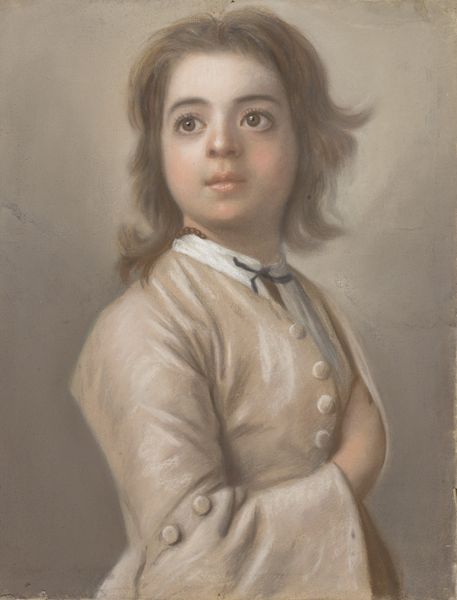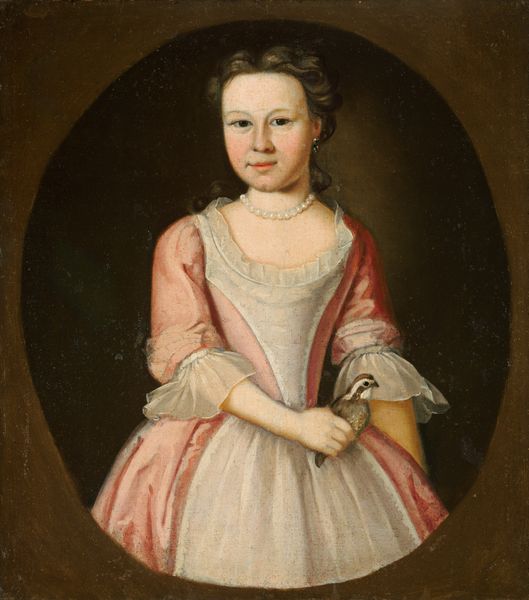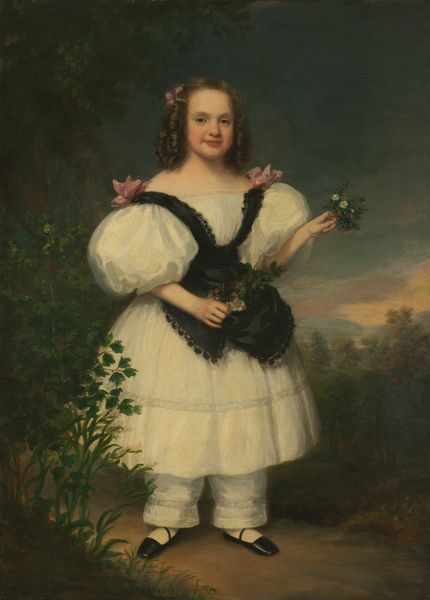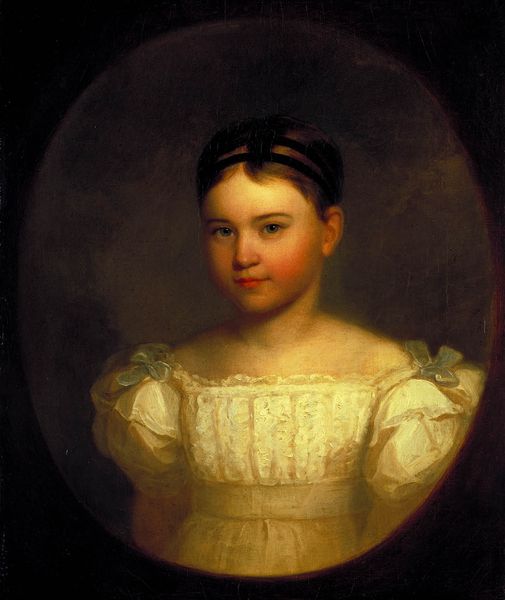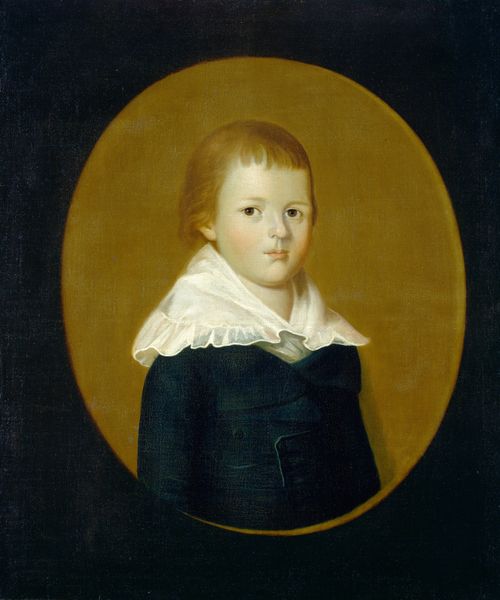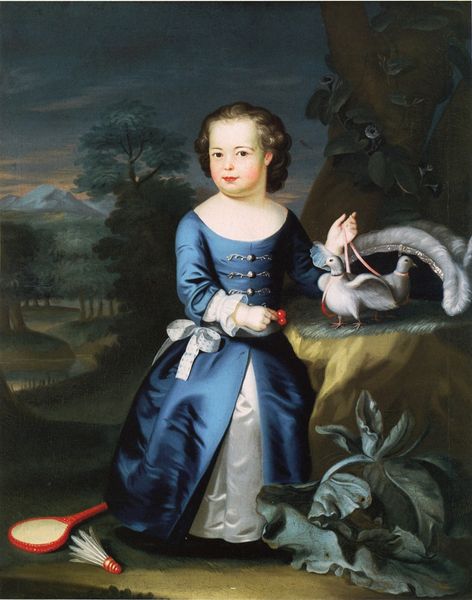
oil-paint
#
portrait
#
oil-paint
#
landscape
#
figuration
#
romanticism
Dimensions: overall: 76.2 x 63.5 cm (30 x 25 in.) framed: 88 x 100.3 x 9.5 cm (34 5/8 x 39 1/2 x 3 3/4 in.)
Copyright: National Gallery of Art: CC0 1.0
Editor: Here we have Robert Street’s "George Washington Deal," painted in 1834 with oil paint. The boy looks solemn and seems posed, holding what looks like a small pickaxe, set against this oddly idealized landscape. What stands out to you in this piece? Curator: Beyond the striking contrast between the child's formality and the implied natural world, I see a negotiation of power, privilege, and burgeoning American identity. Look at the landscape – that perfectly ordered path, leading to what seems like a neoclassical structure. How does this curated "nature" reflect the values being instilled in young George? Editor: I see what you mean! The symmetry almost feels forced, definitely artificial. How does the pickaxe fit into that narrative? It seems out of place. Curator: Precisely. Is it a symbol of exploration, perhaps even exploitation? Think about the era, the pervasive ideology of Manifest Destiny, and the inherent connection between land ownership and power. This innocent portrait subtly nods towards themes of environmental control. The artist likely wants the viewer to associate that the land belongs to this child. Editor: That’s a heavy meaning to put on a child’s portrait. Curator: But that is why we consider not just the ‘what’ but the ‘why.’ Early American art has too long suffered for lack of scrutiny. Who is he posed to be, and who is he at risk of becoming? Editor: Wow, I'd never considered those deeper implications. I was just focused on the slightly awkward composition and his little pickaxe. Curator: It is easy to see only the surface. Art reflects its time, and often, the reflection reveals uncomfortable truths about the culture that birthed it. I am hoping it may invite a closer study of historical inequities, and encourage dialogue. Editor: That's given me so much to think about. I see this portrait in a completely new light now!
Comments
No comments
Be the first to comment and join the conversation on the ultimate creative platform.
